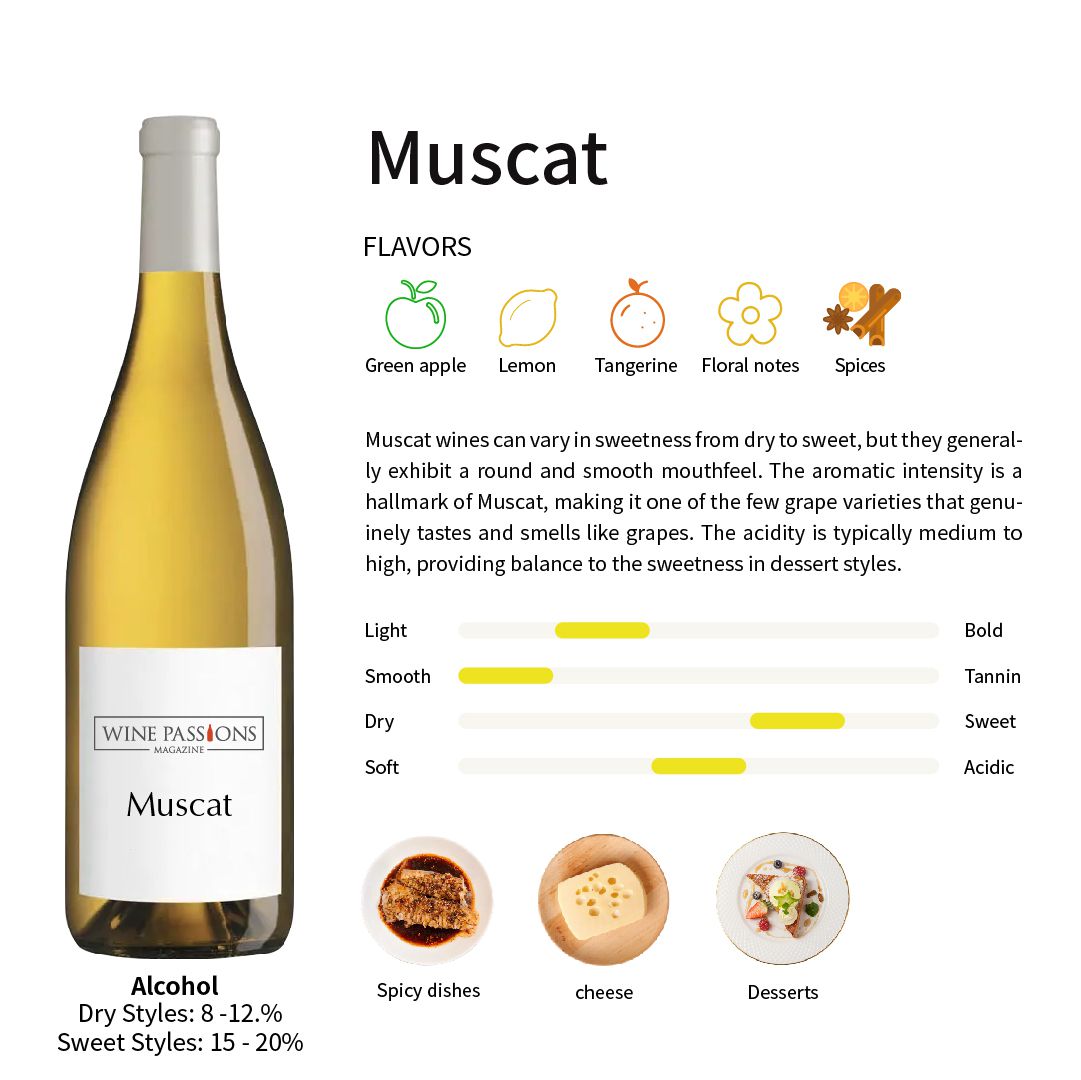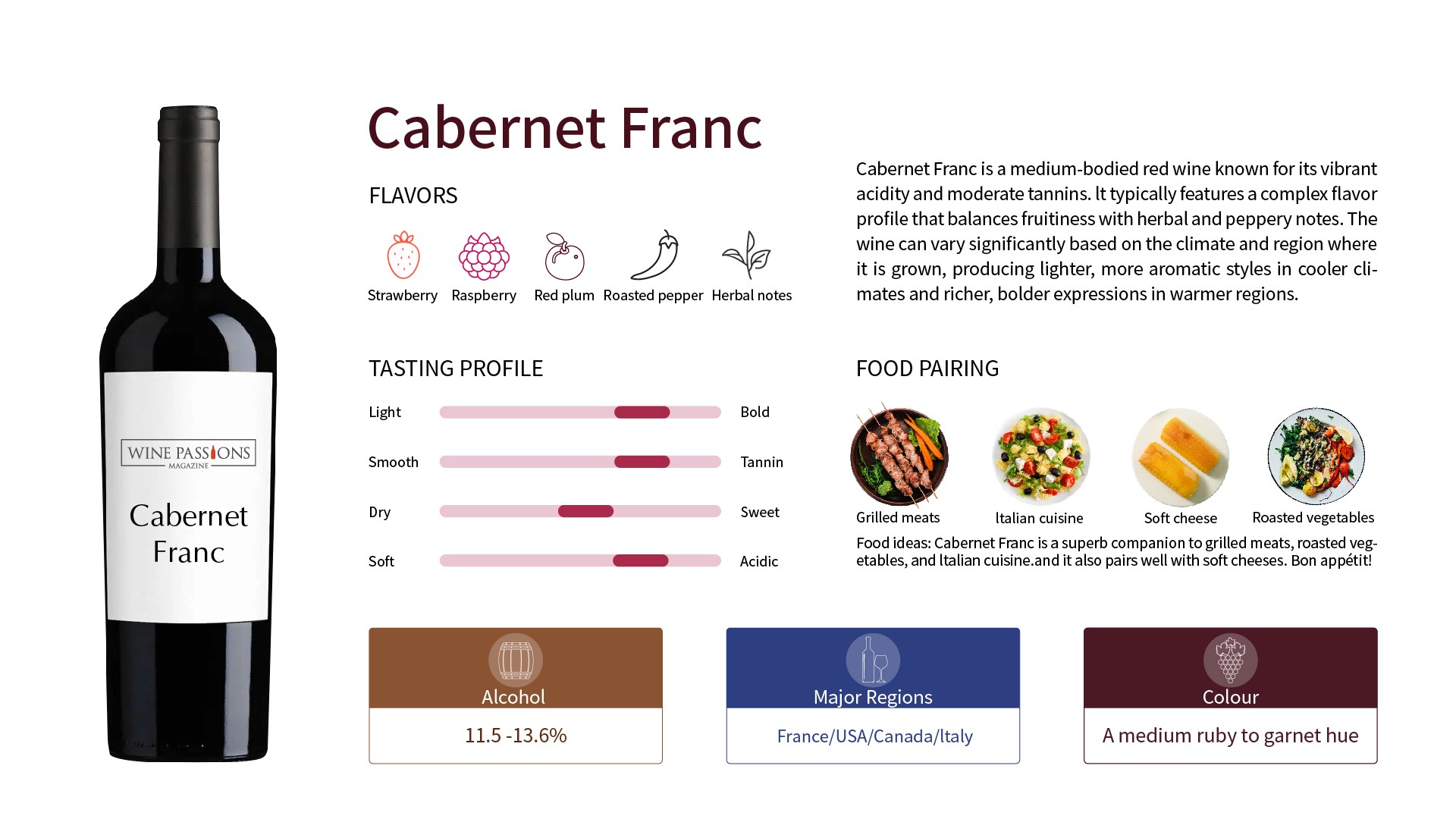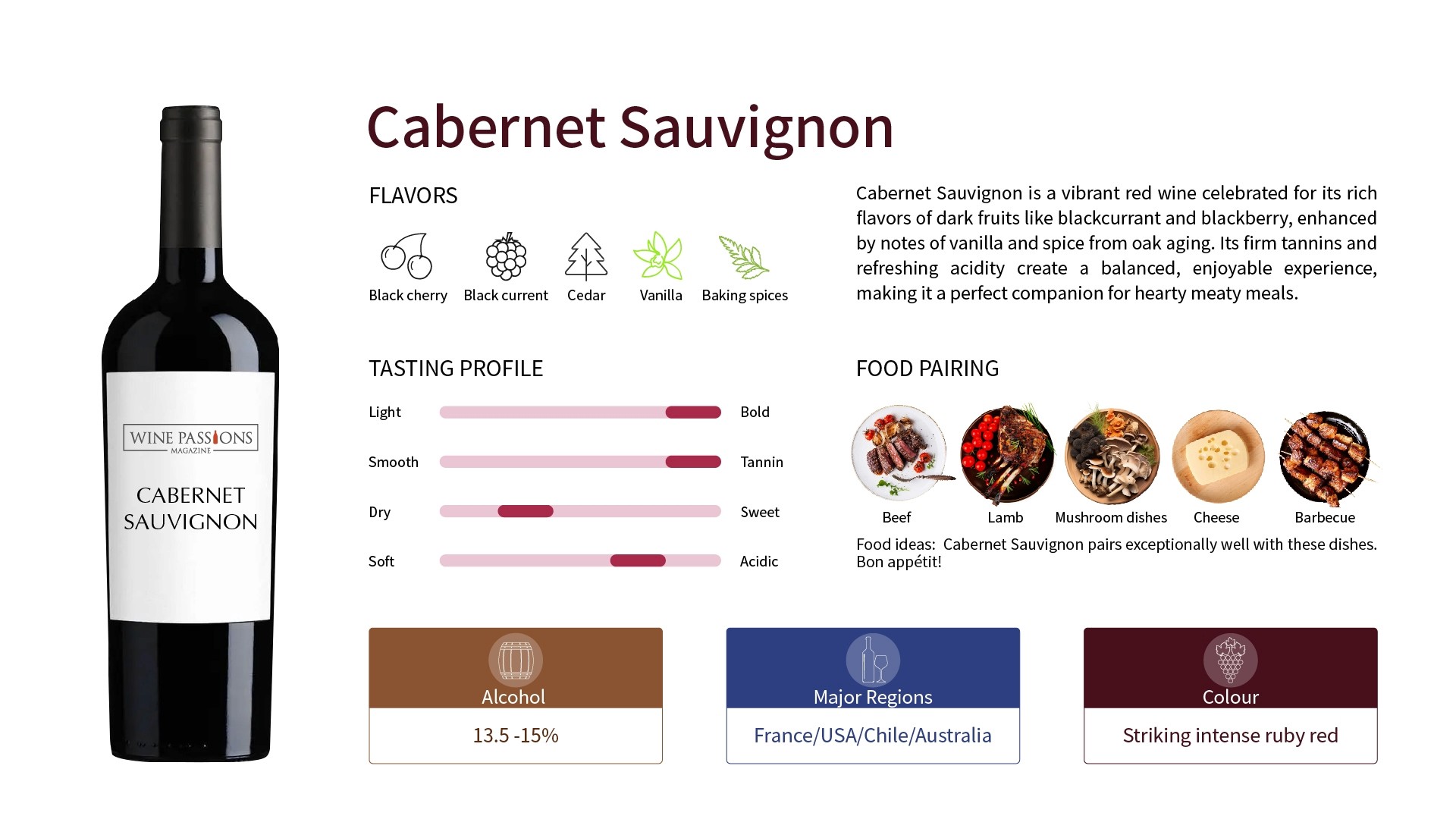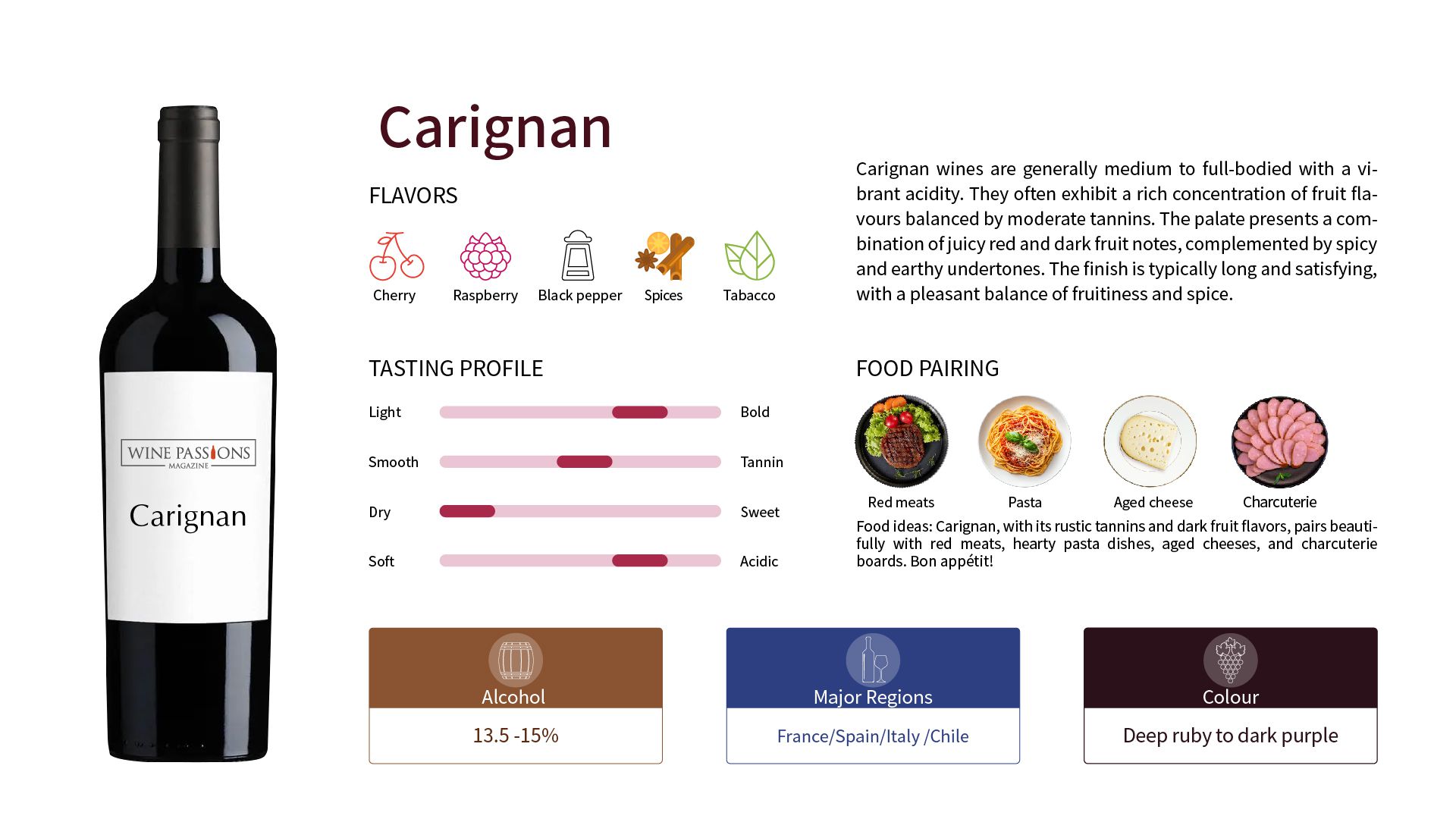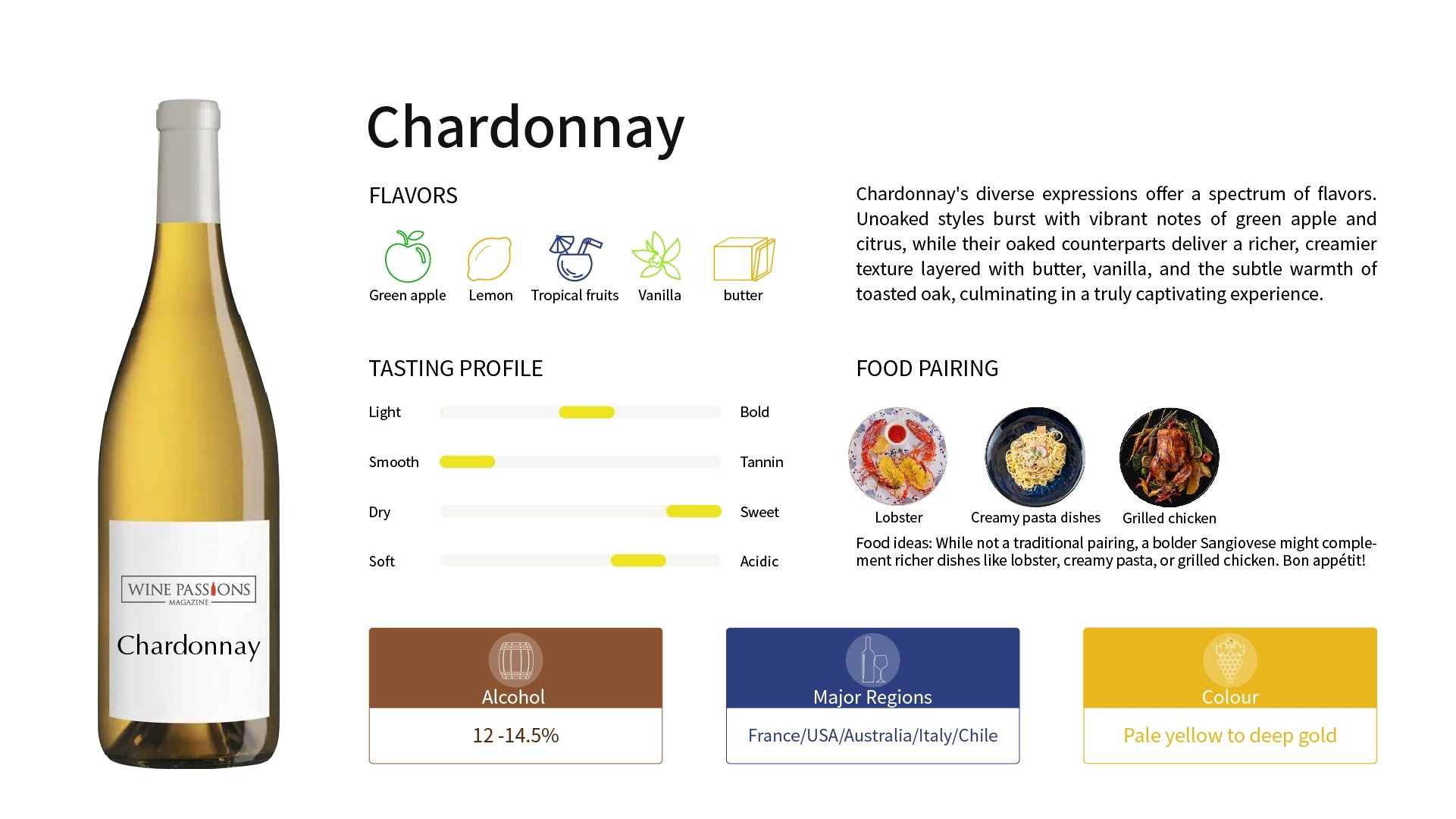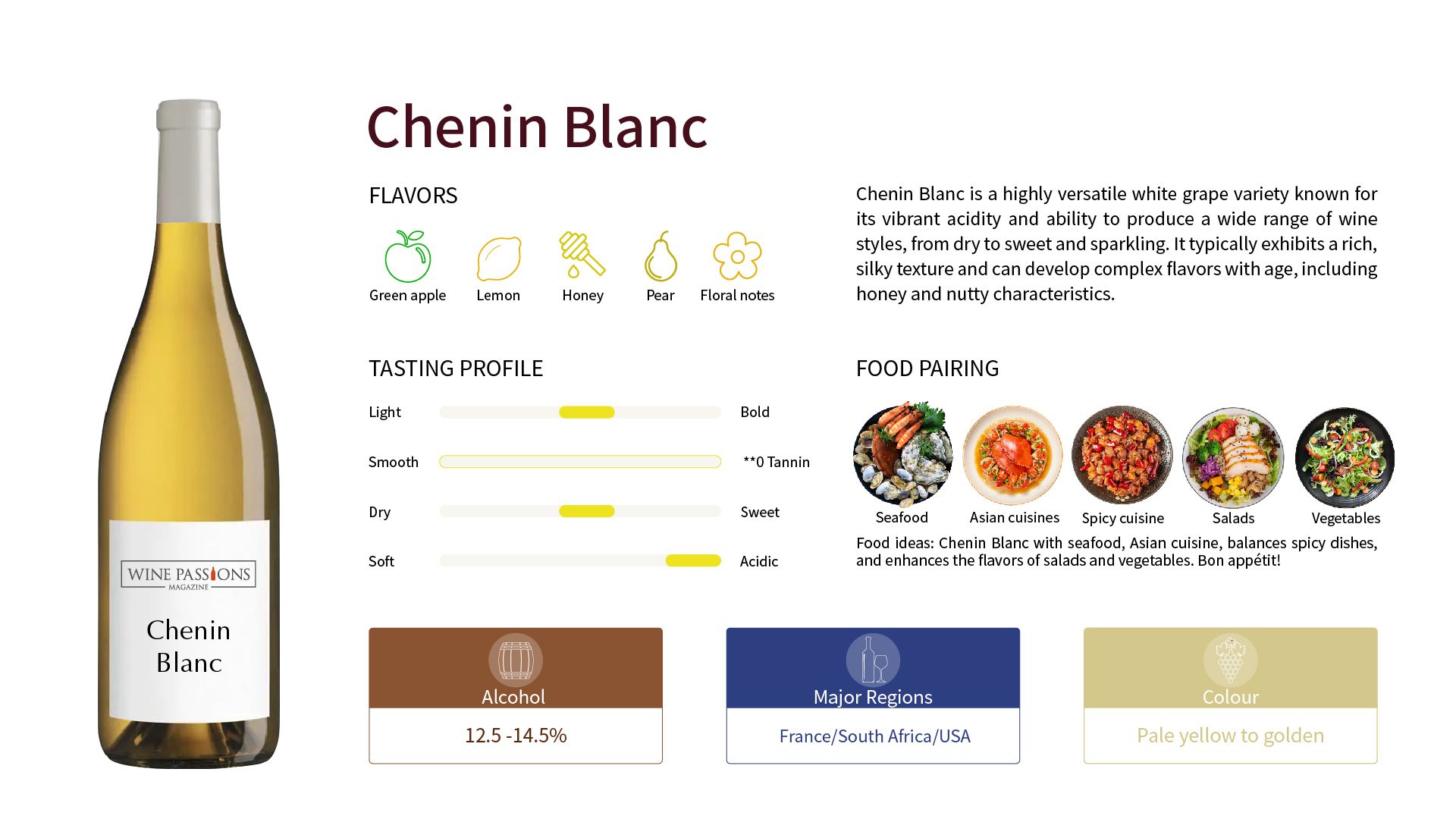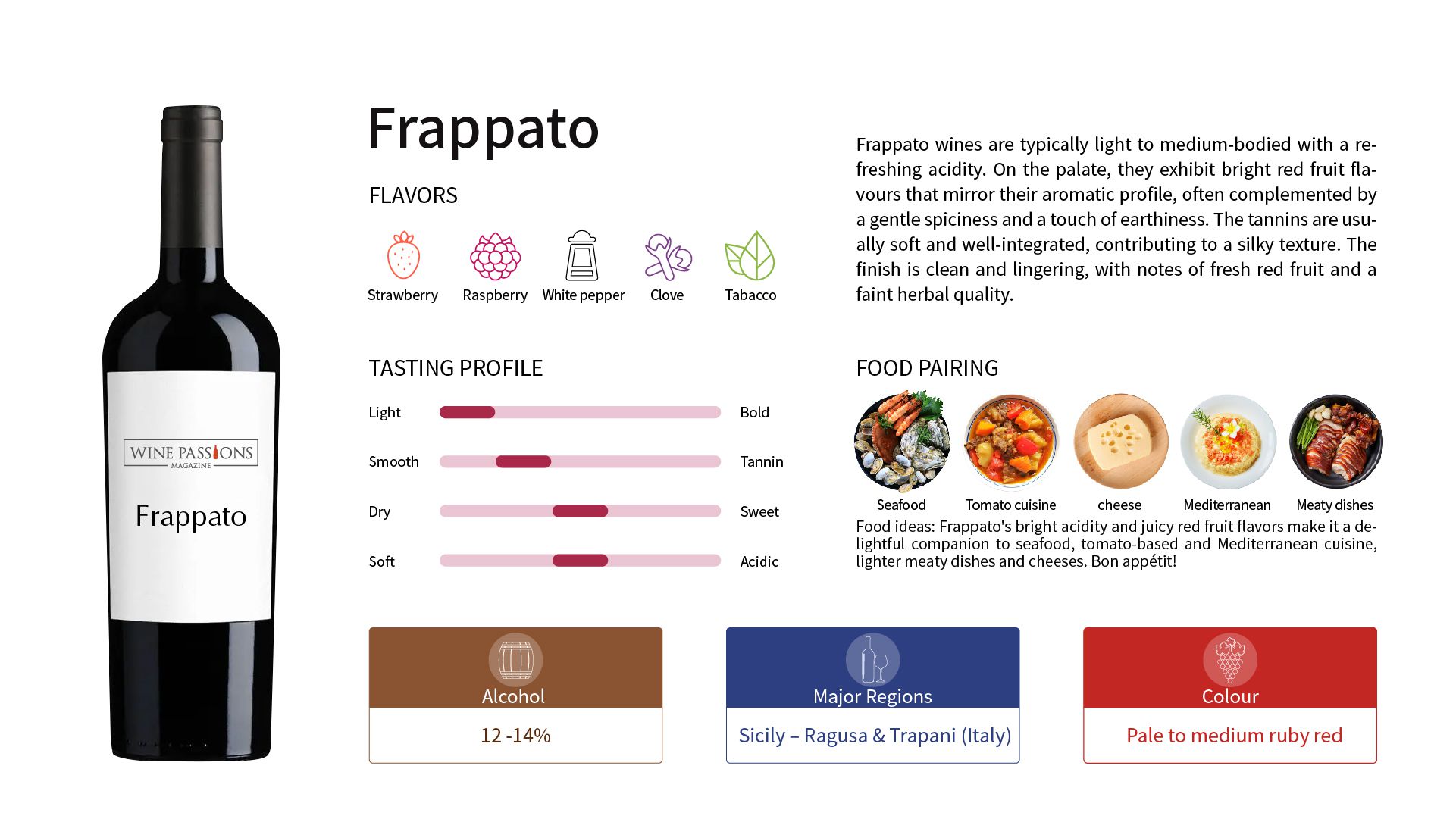Cabernet Franc
Background and Origins
The history traces back to the ancient Mediterranean region. According to historical records, the Romans began to cultivate Muscat on a large scale as early as the 1st century AD, referring to it as “Apianae”, meaning that bees were enchanted by it. This name emphasizes its rich and enchanting aroma, highlighting its importance at that time. With the expansion of the Roman Empire, the cultivation of Muscat spread along the Mediterranean coast, becoming a classic choice among various cultures and regions. The Muscat grape family includes several major varieties, among which the most famous are:
Muscat Blanc à Petits Grains: Known for its intense aroma and high quality, it is the oldest and most refined Muscat grape variety.
Muscat of Alexandria: They are larger in size and commonly used for making sweet wine or eaten as fresh fruit.
Muscat Ottonel: A later hybrid variety, suitable for growing in cooler climates.
These variants not only hold significant importance in local cultures but have also become an important component of the global wine market.
Reasons for Popularity
Unique Aroma: Renowned for its strong and captivating scent, which typically includes complex layers of floral, fruity, and honey notes derived from volatile compounds in the grapes, such as linalool, which is also found in mint and citrus blossoms. Many wine enthusiasts describe it as the “perfume of the grape world,” and this uniqueness makes Muscat stand out in the market.
Diverse Winemaking Characteristics: Muscat grapes can be used to produce a variety of different wine styles, including sweet, dry, sparkling, and fortified. These diverse styles can meet the demands of various consumers and can be aptly positioned in different occasions and cultures.
Sweet Muscat: Such as Muscat de Beaumes-de-Venise, loved for its rich fruit flavor and sweet palate.
Sparkling Muscat: Such as Moscato d’Asti, this semi-sparkling wine is favored by younger consumers for its light sweetness and low alcohol content (about 5.5%).
Dry Muscat: Such as some French-produced Muscat Blanc, these wines usually have higher acidity and balance, suitable for pairing with various foods.
Food Pairing Versatility: Due to the bright fruit aromas and moderate sweetness of Muscat wines, they are an ideal choice for pairing with various foods. Whether dry or sweet, Muscat can complement a wide range of dishes. This versatility makes Muscat a popular choice at parties and dinners, further enhancing its market appeal.
High Drinkability and Acceptability: Because of its smooth texture, abundant fruit aromas, and natural sweetness, it is extremely loved by beginners and consumers. Moreover, its low alcohol content is easily accepted by young people, and its rich yet not overly complex flavors make it a preferred choice for many social occasions.
Flavor Characteristics
Fruity Aromatic Temptation: Such as green apples, white peaches, lychees, and lemons.
Abundant Floral Aromas: Like a small garden filled with orange blossoms, honeysuckle, and roses.
Fresh and Balanced Mouthfeel: Achieving balance between acidity and sweetness, providing a comfortable and layered enjoyment.
Moderate Spicy Notes: Some Muscat has hints of pepper or cinnamon.
Main Production Regions of Muscat
France: The southern part of France is an important production area for Muscat, especially in the Languedoc-Roussillon and Rhône Valley regions, known for producing famous sweet wines like Muscat de Beaumes-de-Venise.
Italy: Italy is the home of famous Muscat wines like Moscato d’Asti and Asti Spumante, which are widely popular for their lightness and sweetness.
Spain: Spain also produces Moscatel, a sweet wine made from Muscat grapes, often paired with desserts or served as an aperitif.
Australia: Australia has also begun cultivating Muscat and producing some high-quality sweet and sparkling Muscat wines, such as Rutherglen Muscat, known for its caramel and cocoa flavors.
Famous Muscat Wines
Moscato d’Asti (Italy): This semi-sparkling sweet white wine is known for its low alcohol content (about 5.5%) and rich fruity aroma, making it a popular choice at gatherings.
Asti Spumante (Italy): Another fully sparkling sweet white wine, its fresh palate and bright acidity make it a favorite at parties.
Muscat de Beaumes-de-Venise (France): This fortified sweet white wine is renowned for its intense fruit flavors and high sugar content, making it an ideal pairing with blue cheese or chocolate desserts.
Tasting Handling
Tasting Temperature: It is recommended to chill sweet Muscat to 8-10°C, while dry Muscat should be kept at 10-12°C to showcase its best flavors.
Tasting Glass: Use tulip-shaped glasses to concentrate the aroma, enhancing the sensory experience of Muscat's virgin fragrances.
Decanting Time: Generally, Muscat does not require long decanting times, just a few minutes; however, Rutherglen Muscat is an exception, benefiting from a longer decanting time to enhance its complexity.
Aging and Storage: Muscat is usually suitable for early consumption, but certain fortified sweet wines, especially Australian varieties, can develop caramel and nut flavors with aging.
Food Pairing
Dry Muscat: Pairs well with roasted chicken salad or clam pasta, enhancing the freshness of the dishes.
Sweet Muscat: Spicy Asian flavors such as Thai and Indian dishes complement the sweetness of Muscat; or pair with French cheese, honey-roasted figs, or lychee tart for a delightful blend of sweetness.
Sparkling Moscato: Best enjoyed with cream-based desserts, such as tiramisu or panna cotta.
